French evolution: MoMu considers Martin Margiela's subversive years at Hermès

A new exhibition at Antwerp’s MoMu fashion museum focuses on the synthesis Martin Margiela reached between concept and commerce in his collections for the French luxury house Hermès.
Less widely known and visually referenced, this pre-digital period in Margiela’s career is often overlooked or deemed less radical than the avant-garde designer’s own eponymous collections. Even MoMu’s own Margiela retrospective in 2008 skirted the Belgian designer’s Hermès stint. But for Kaat Debo, the director of MoMu and curator of the exhibition, now was the time for the museum to, ‘give fashion, which has a very short-term memory, its memory back’.
With the approval of Martin Margiela – who styled each mannequin himself – and the abundant archive that Pierre-Alexis Dumas, artistic director of Hermès, opened up for Debo to delve into, the exhibition is an incredibly insightful elucidation of the consistency in Margiela’s work – as well as the echoes that resound from his maison to the one he was given creative carte blanche for from Jean-Louis Dumas, then Hermès' CEO.
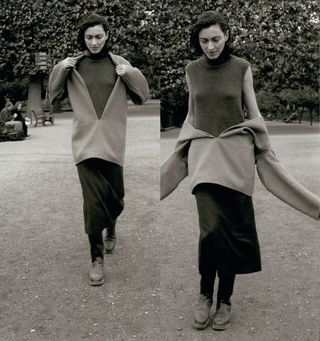
Martin Margiela’s ’Vareuse’ design for Hermès features a neckline with a deep V to prevent its wearer from damaging their hairstyle or make-up
‘The vision with which Margiela entered the world of Hermès, together with the trust and respect between him and my father, helped Hermès enter the 21st century,’ says Pierre-Alexis Dumas. ‘Margiela understood that there is no creativity without history.’
Scenography by Bob Verhelst and Thomas Van Looij evokes the thought processes Margiela developed, by placing his Maison Margiela silhouettes against white walls, shoulder to shoulder with his Hermès designs, presented against orange backdrops. ‘The avant-garde approach and the luxury approach were not separate for Martin,’ stresses Debo. ‘They were two translations of the same DNA.’
Margiela’s deep respect for women drove him to put comfort first. He observed the way women clutched their coats, for example, and designed garments with attention to how they function within a daily wardrobe. This is evinced in 'Le porte vêtement’, a coat that could be carried like a picnic blanket using leather straps.
A number of his innovative designs for Hermès – revolving around this philosophy – are shown. For instance, the 'Vareuse' is a deceptively simple but ingeniously made deep V-neck top without darts, that allows a woman to take of her sweater without messing up her hair – she can just slide it off her shoulders and tie the sleeves around her waist.
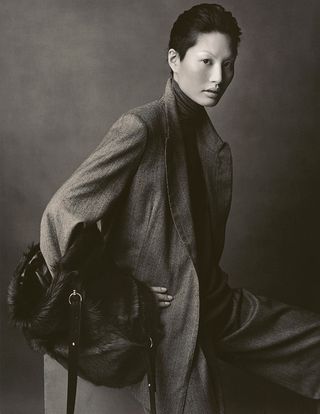
The exhibition highlights the creative compatibility between subversive and commercial design
A specifically developed black fabric that repels water and doesn’t crease is used for an 'anti-pluie' – an outer garment that protects the coat or jacket underneath in a supremely insouciant yet elegant way; while the comfortable knitwear Margiela developed for Hermès quite literally fits like a glove. The technique used was taken from the way a glove is knitted, rounded and seamless.
'Margiela: The Hermès Years' clearly shows, through juxtaposing the subtly tonal Hermès designs with the structured and conceptual Maison Margiela pieces, the surprising compatibility of what at first sight look like irreconcilable differences: the tenets of extreme avant-garde and luxury fashion. Today, those two worlds have merged, and distinctive visions are rewarded commercially. The genius of Margiela is exactly this: both his creative vision and his business acumen, originally radical, have made individualism mainstream.
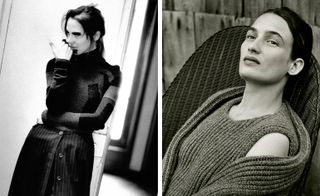
Left, Maison Martin Margiela A/W 1991–1992, Photography: Marina Faust. Right, Hermès A/W 1999–2000 shawl collar cardigan and sleeveless tunic pullover in cashmere, 'Portraits de femme en Hermès', Le Monde d’Hermès, Model: Marie-Anne Van der Plaetsen.
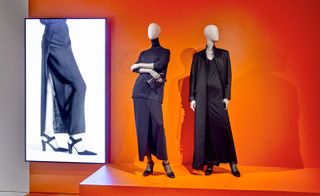
Scenography by Bob Verhelst and Thomas Van Looij evokes the thought processes Margiela developed, by placing his Maison Margiela silhouettes against white walls, shoulder to shoulder with his Hermès designs, presented against orange backdrops.
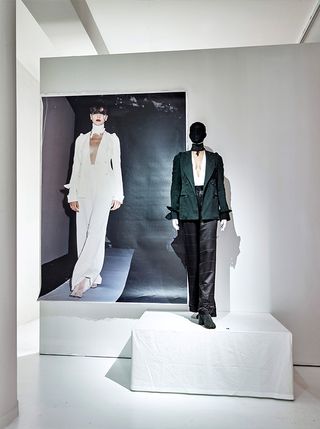
The exhibition emphasises the functionality of Margiela’s designs, including a specially developed black fabric that repels water and doesn’t crease
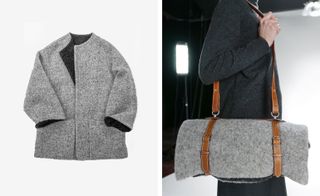
Hermès, L/Z 2000 ‘Le porte vêtement’.
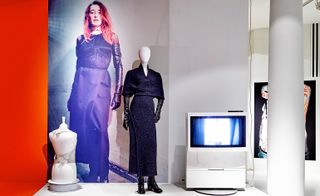
Margiela styled each of the mannequins in the exhibition himself.
INFORMATION
‘Margiela, the Hermès years’ is on view until 28 August. For more information, visit the MoMu website
Wallpaper* Newsletter
Receive our daily digest of inspiration, escapism and design stories from around the world direct to your inbox
-
 Artist Mickalene Thomas wrestles with notions of Black beauty, female empowerment and love
Artist Mickalene Thomas wrestles with notions of Black beauty, female empowerment and love'Mickalene Thomas: All About Love’, a touring exhibition, considers Black female representation
By Hannah Silver Published
-
 New Phaidon book celebrates the world's best designers
New Phaidon book celebrates the world's best designersDesigned for Life: The World’s Best Product Designers by Phaidon celebrates the rich contemporary landscape of product design
By Tianna Williams Published
-
 The moments fashion met art at the 60th Venice Biennale
The moments fashion met art at the 60th Venice BiennaleThe best fashion moments at the 2024 Venice Biennale, with happenings from Dior, Golden Goose, Balenciaga, Burberry and more
By Jack Moss Published
-
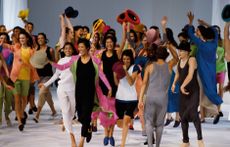 ’Issey Miyake: 1960 to 2022’ is a definitive guide to the pioneering Japanese designer
’Issey Miyake: 1960 to 2022’ is a definitive guide to the pioneering Japanese designer’Issey Miyake: 1960 to 2022’ is a new Taschen book that provides a comprehensive overview of the pioneering Japanese designer’s ’poetic but pragmatic’ work
By Jack Moss Published
-
 Thom Browne on his 20th-anniversary book, curated by Andrew Bolton
Thom Browne on his 20th-anniversary book, curated by Andrew Bolton‘Thom Browne’ the book, a collaboration with partner Andrew Bolton, charts the American designer’s career. Here, Browne tells Wallpaper* the story behind his first monograph
By Jack Moss Published
-
 The finest fashion books for style enthusiasts
The finest fashion books for style enthusiastsThe fashion books taking pride of place on the Wallpaper* style desk, from enticing photographic tomes to rare limited-edition titles. Here, we explore the best new releases
By Jack Moss Last updated
-
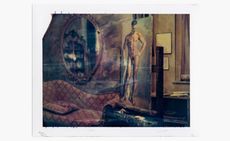 Fendi and Kim Jones pay tribute to Bloomsbury Set in new book
Fendi and Kim Jones pay tribute to Bloomsbury Set in new bookThe Fendi Set: From Bloomsbury to Borghese, published by Rizzoli and featuring ethereal imagery by photographer Nikolai von Bismarck, celebrates the dual history of the Roman fashion house and the mid-20th century British intellectual group
By Laura Hawkins Last updated
-
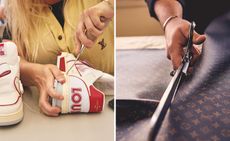 Louis Vuitton celebrates its ateliers and artisans in chic new tome
Louis Vuitton celebrates its ateliers and artisans in chic new tomeLouis Vuitton Manufactures, published by Assouline, explores the French maison’s craftsmanship through specially commissioned photography
By Hannah Silver Last updated
-
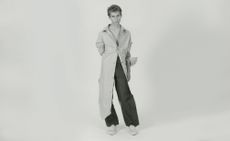 Tedy Eiley, the Paris-based brand inspired by mundane domesticity
Tedy Eiley, the Paris-based brand inspired by mundane domesticityOur Next Generation 2022 showcase shines a light on 22 outstanding graduates from around the globe, in seven creative fields. Here, we profile fashion graduate Brian Tusin, from Institut Français de la Mode, Paris
By Laura Hawkins Last updated
-
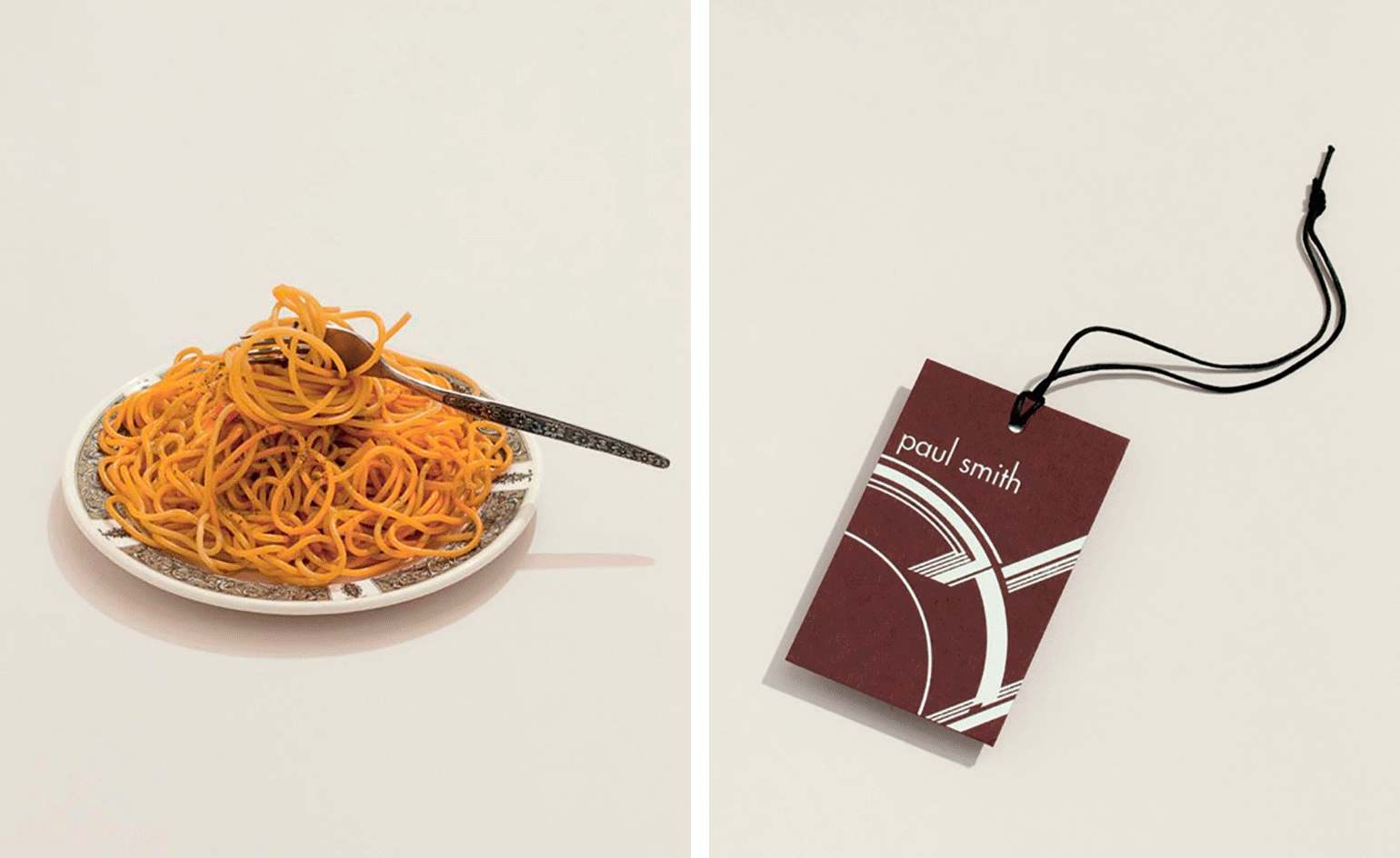 Paul Smith on a few of his favourite things
Paul Smith on a few of his favourite thingsFashion designer and inveterate collector Paul Smith shares a few of his favourite things in a new book, and here with his friend and travelling companion Deyan Sudjic
By Deyan Sudjic Published
-
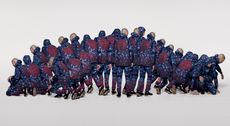 Celebrating the fabric futurism of Stone Island
Celebrating the fabric futurism of Stone IslandRizzoli’s Stone Island: Storia explores the experimental history of the Italian outerwear brand
By Laura Hawkins Last updated